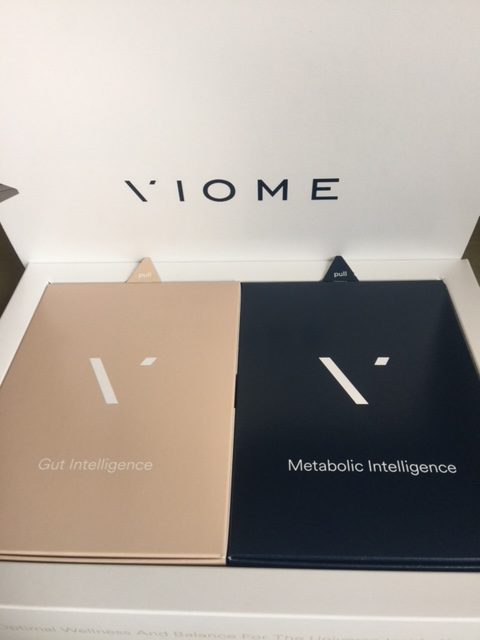Confused about what to eat?
The options for gut-healing diets are overwhelming. And there’s so much conflicting info about the benefits or danger of fiber, fat, carbs, meat and fat.
For example, for IBS, the options are many. There’s Paleo, Primal, low FODMAP, AIP, SCD, GAPS, gluten/dairy-free, Keto/low carb, vegan and low residue, to name a few.
So, which is the right one?
The answer depends on the unique bacterial makeup of your gut.
Since no two people have the same gut flora, no two people should be on the same gut-healing diet.
The problem with dietary templates is that they’re too general.
While dietary protocols are a good starting point, at best they offer a trial and error approach that’s hit or miss. It can be frustrating even if you put in your best effort.
In the future, nutritional protocols will be personalized based on bacterial interactions with foods. This will be the best determination of which foods are beneficial or inflammatory for us.
How to customize your diet with Viome
Currently, there are three approaches to personalizing your diet.
There’s food allergy testing, elimination diets and stool biome testing.
Elimination diets remove potentially inflammatory foods for a period of time, then reintroduce each food, one by one, to gauge the body’s reaction. This requires lots of time, attention, and patience. Most people can’t handle this level of precision.
Allergy testing may be useful, but can also give false negatives and miss important food sensitivities.
Bacterial stool tests like Viome map out gut bacteria and target food recommendations to your current situation. Our gut bacteria changes, that is why diets/foods that used to work for us no longer do.
I was super excited to try Viome and was extremely impressed and shocked at my results.
This test showed me some valuable things about my body. And I share them all below.
My results
In addition to mapping out the species and balance of bacteria in my gut, Viome also gauged the state of my gut lining.
While not a clinical result, Viome has a marker that either rules out or suggests that you may have leaky gut.
My test suggested leaky gut was not an issue for me.
Here’s the huge paradigm shift the test provided: my body is better at digesting carbohydrates than fat and protein.
For years I’ve been eating a relatively low carb and mostly grain free diet with lots of fat and protein. I always thought I digested fat and protein quite well.
But according to my test results, my body does better with grains and complex carbs.
A warning: My test results do not apply to the majority of people with IBS. While plenty of IBS folks have trouble digesting fats, even more have a harder time with carbohydrates, which can cause bloating, gas and inflammatory pain when undigested particles ferment in the gut.
An specific imbalance of bacteria (also called dysbiosis) can cause carb intollerance in some people. But this was not the case for me.
My results suggested I emphasize quinoa in my diet, which I haven’t eaten in years. It also told me to completely avoid white rice, the only grain I included in my diet.
White rice is easy to digest for people with SIBO. They typically break it down and tolerate it well. When I had SIBO I got into the habit of eating white rice. But I no longer have SIBO, and white rice feeds bacterial species or yeasts that are apparently overgrown. Brown rice is a better alternative for me, according to my Viome results.
I never felt bad after eating white rice so I wouldn’t have known it wasn’t doing my biome any favors. I would not have access to this valuable info without testing.
My super foods
White rice is out. Fat and protein should be lowered. Here’s what I should be eating….
This short list of super foods feed the most desirable and/or lowest bacterial colonies in my belly.
Quinoa
Cauliflower
Winter and yellow squash
Parsley
My food list
Viome provides a personalized food list of what will help or hinder your bacterial balance.
It lists foods to indulge in, enjoy, minimize and avoid.
It also provides ideal macro nutrient ratios, with a chart of what your plate should look like. My plate was 10 percent fat, 30 percent protein and 70 percent complex carbs (fruit, whole grains and veggies).
Fruit to emphasize were oranges, lemons, apples, and blueberries.
The best veggies to eat were beets, asparagus, broccoli, eggplant, garlic, kale, sauerkraut and cucumbers.
Thankfully, eggs and bone broth was on my indulge list.
But I needed to lower my intake of fatty cuts of beef, lamb and pork, leaning more towards white meat chicken, turkey, hallibut, crab and shrimp for my protein sources.
The idea was not to go too low fat, just to LOWER my current fat intake, which was high.
High fat diets are in fashion right now so it’s easy to assume something is healthy when you read about it everywhere. But everyone is different, what works great for some people can be bad for others. Biome testing can determine that difference.
I also go feed back on my metabolism with advice that I should not snack between my 3 meals a day.
The bottom line
While I don’t currently have digestive issues, balancing your biome is important for preventative health reasons. My bacterial balance was not perfect (the results said it was slightly out of balance), which leaves me vulnerable to digestive issues if my environment gets stressful and my diet is unhealthy.
By following the dietary suggestions (listed below) I can have an opportunity to strengthen my immune system, giving me resiliency against environmental stressors, external pathogens and internal overgrowths.
While I haven’t followed the Viome suggestions perfectly, the changes I’ve made to my diet have been noticeable in how I feel. I have more energy, a clearer head and a lighter feeling in my body.
I incorporated the Viome suggestions after a very stressful period in my life. I moved out of state and experienced so much change and instability. I stayed in a moldy house for a month, ate emotionally (sugar, peanut butter and wine) and started having digestive and immune symptoms.
The stress of the move, the lack of stability and all the emotional eating manifested as allergies and chronic constipation. I fixed it by changing my diet to the Viome suggestions. I lowered my fat and increased complex carbs, which helped my struggling liver detox and produce bile. This made all the difference in reversing the digestive/immune disaster I was heading towards.
I avoided a close call with this valuable info and am so thankful.
Why balance your biome?
The more diverse and balanced your biome (bacterial ecosystem), the better you feel mentally, emotionally and physically. The stronger your immune system is. And a strong immune system will defend against pathogens assaults to the gut. It will prevent yeast overgrowth, bacterial overgrowth and a parasite infestation.
IBS is a slow road to bacterial mayhem and imbalance. It doesn’t happen overnight, the biome is slowly disrupted and one last insult (the stomach flu, food poisoning, chronic stress or a traumatic event) can cause sudden or severe symptoms.
Rebalancing your biome can mend a leaky gut, clear up food intolerances and help the body fight off pathogens.
What I learned
Here are a few other things Viome advised me to do:
Avoid sweets/sweeteners (honey, stevia, maple syrup, chocolate). No surprise, I know my body does better without them.
Avoid foods with yeast. Yeast contributes to candida overgrowth and I’ve had issues with candida in the past.
Avoid inflammatory oils like safflower and canola, as well as beans and soy. I avoid these foods typically.
Here’s the shocker….
Wheat was on my indulge list.
I’m currently gluten free, so this change is a bit of a stretch right now. But I’ve been enjoying brown rice, quinoa and amaranth.
The fact that wheat is on my recommended list may be due to the fact that I don’t have leaky gut. Gluten intolerance and leaky gut are closely linked. Regardless, I’m avoiding wheat for now. You have to do what feels right.
The changes I made were reducing staple foods like pastured bacon, coconut, avocado, nuts and dairy (except for kefir) and replaced these foods with apples, blueberries, oranges, flax seeds, cauliflower, parsley, squash, amaranth porridge, quinoa, beets, kale, cucumbers, pastured chicken, bone broth and eggs.
The result was more energy, a sharper mind, a lighter feeling in my body and better moods. That fat I was struggling to digest was weighing me (and my liver) down.
In conclusion
I love that these test results challenged my beliefs about what diet was best for me.
While Viome does not identify pathogenic bacteria, (the GI Map is the best test for that) it gave me useful feedback of what my body was needing right now to thrive.
If you’re interested in figuring out what foods work for you, the answer is inside of you. The Viome test will shed light on your internal environment and help you get the foods you need for biome diversity, strength and balance.
Intuitive eating comes from the gut, but often our head and anxiety gets in the way of listening to those messages. Now you can decipher those gut messages in a more scientific way.
If you’re sick of conflicting food advice online and want to try the future of nutritional counseling, you can purchase the Viome test kit right here.


